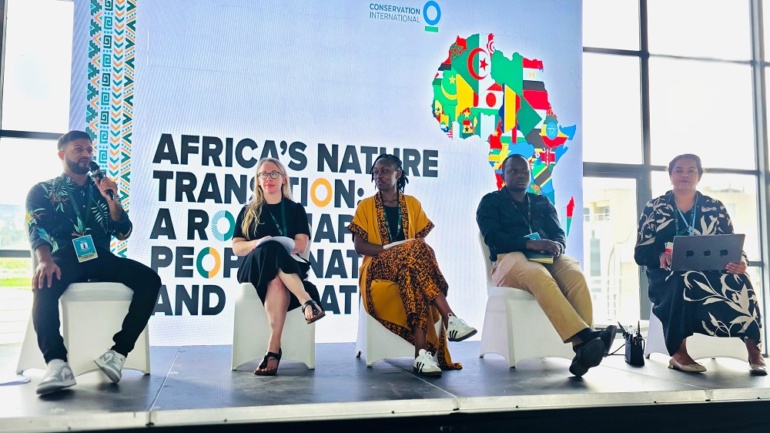As the Earth warms, mountains in East Africa are losing their icecaps at unprecedented rates. For instance, according to the United Nations Environmental Programme, Mount Kenya has lost 90% of its ice over the past century. The icecaps of Mount Kilimanjaro in Tanzania and the Rwenzori Mountains in Uganda/DRC are also shrinking.
Scientific evidence has linked this to global warming, declining precipitation, and black carbon. Researchers claim that if current retreat rates persist, Mount Kenya’s glaciers are projected to vanish before 2030.
Additionally, since 1912, Mount Kilimanjaro has lost over 80% of its ice cover. The Furtwängler Glacier shrank from 113,000 m² in 1976 to just 11,000 m² by 2018, and projections suggest it may disappear entirely before 2030.
This crisis is not isolated. According to the World Glacier Monitoring Service, glaciers worldwide lost 273 ± 16 gigatonnes in mass annually from 2000 to 2023, with an increase of 36 ± 10% from the first (2000–2011) to the second (2012–2023) half of the period, pointing to a broader climate crisis.
Human Impact
The gradual shrinking of icecaps means a loss in biodiversity of these unique ecosystems, and presents an impending water crisis across the region. Glaciers feed rivers that support millions, either through irrigation or hydropower. Tana River, which flows from Mount Kenya, is a critical resource to Kenya’s economic and food security.
The Tana River basin hosts a series of cascading dams, the Seven Forks Hydropower Project, and the Bura Irrigation and Settlement Scheme. Bura is among Kenya’s oldest irrigation projects, established to improve food security and settle landless Kenyans with over 6,700 hectares currently under cultivation.
The loss of icecaps also signifies cultural loss in the indigenous communities living at the foot of these mountains who revere these mountains for their spiritual significance. For example, for the Kikuyu, Embu, and Meru communities, Mount Kenya, known as Kirinyaga, is revered as the dwelling place of Mwene Nyaga, the supreme deity. Traditionally, homes are constructed with doorways facing the mountain, symbolizing reverence and a spiritual connection.
Also, the Chagga people, residing on Mount Kilimanjaro’s slopes, regard the mountain as sacred, believing it houses spiritual beings and deities. They perform rituals and ceremonies to honor the mountain’s power and seek blessings for their crops and livestock. The mountain’s glaciers are integral to these spiritual practices.
During a study by Cultural and Spiritual Values of Protected Areas Organization in the Rwenzori member of the Bakonzo ethnic group, said, “You people have been coming to talk to us about the park for years. But now you are talking about our culture, you are finally talking about something that is important to us.”
This statement emphasized the importance of acknowledging and preserving the cultural and spiritual ties indigenous communities have with these mountains, especially as environmental changes threaten these sacred landscapes.
Are We Too Late?
According to Jemma Wadham, a glaciologist at University of Bristol, “We should treat glacier loss as an imminent threat to life—a lot of lives, millions of people around the world and the world as we know it.”
While efforts are being made globally to tackle the crisis, one may wonder whether the current efforts are enough.
For instance, Kenya’s Climate Change Act of 2016 established a legal framework for climate change response, creating institutions like the National Climate Change Council to oversee mitigation and adaptation efforts.
The Environment Laws (Amendment) Bill, 2024, further emphasizes afforestation and reforestation, promoting tree planting across all counties and amending the Climate Change Act to support these efforts.
Moreover, the EAC Climate Change Policy provides a framework for Partner States to implement collective measures addressing climate change, focusing on adaptation and mitigation to reduce regional vulnerability
Climate finance and indigenous voices consideration in discussions have always been a controversial global issue. For instance, in July 2022, the EAC endorsed a Climate Finance Access and Mobilization Strategy, aiming to address barriers and enable upscaling of climate finance across Partner States, including Kenya, Rwanda, Uganda, Tanzania, Burundi, South Sudan, and the Democratic Republic of Congo.
However, reports indicate that Indigenous contributions have been underrepresented in key climate reports and policy processes, such as the Intergovernmental Panel on Climate Change (IPCC) assessments and Nationally Determined Contributions (NDCs).
In Kenya, initiatives like the World Bank’s Financing Locally-Led Climate Action (FLLoCA) program aim to empower local communities, including Indigenous groups, by providing resources for climate adaptation projects.
However, broader analyses reveal that wealthy nations have fallen short in delivering promised climate aid to East African countries. For example, in 2021, only $2.4 billion was provided to East African nations, a fraction of the $53.3 billion needed annually to meet climate goals.
“Africa’s glaciers hold the future of water for millions, and we must act… before they vanish,” emphasizes Olufunke Cofie and Maimouna Tall from the International Water Management Institute.
Patricia Nying’uro, a climate scientist and IPCC Focal Point for Kenya, emphasizes that without strong mitigation and adaptation actions, losses and damages will continue to disproportionately affect the poorest and most vulnerable populations.
The time to act is now. The global community needs to prioritize glacier monitoring, amplify indigenous voices, and enforce climate financing pledges, or we may be the last generation to see snow on the equator!
Read also: Faith For Earth Youth Council



